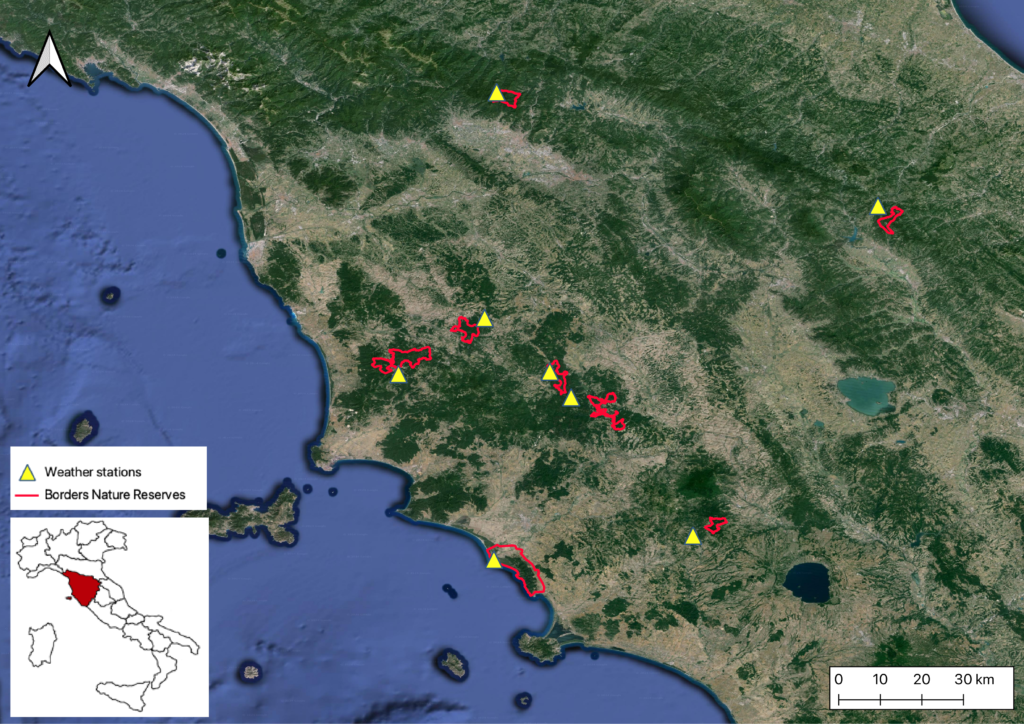
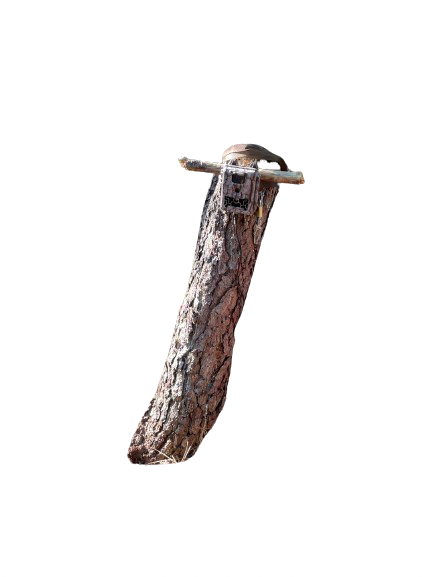
This study took place in 8 Nature Reserves of Tuscany (Italy) during the months of June, July, and August from 2021 to 2023. Due to their distribution, the study areas are representative of the altitudinal and latitudinal/longitudinal gradient of climatic and vegetative variation of this bioregion.
The activity level of the three species analysed was assessed by the number of detections gathered from the numerous camera traps. Each detection was then paired, at the same time, with the air temperature recorded by the closest weather station.
For each study species, I analysed two response variables separately:
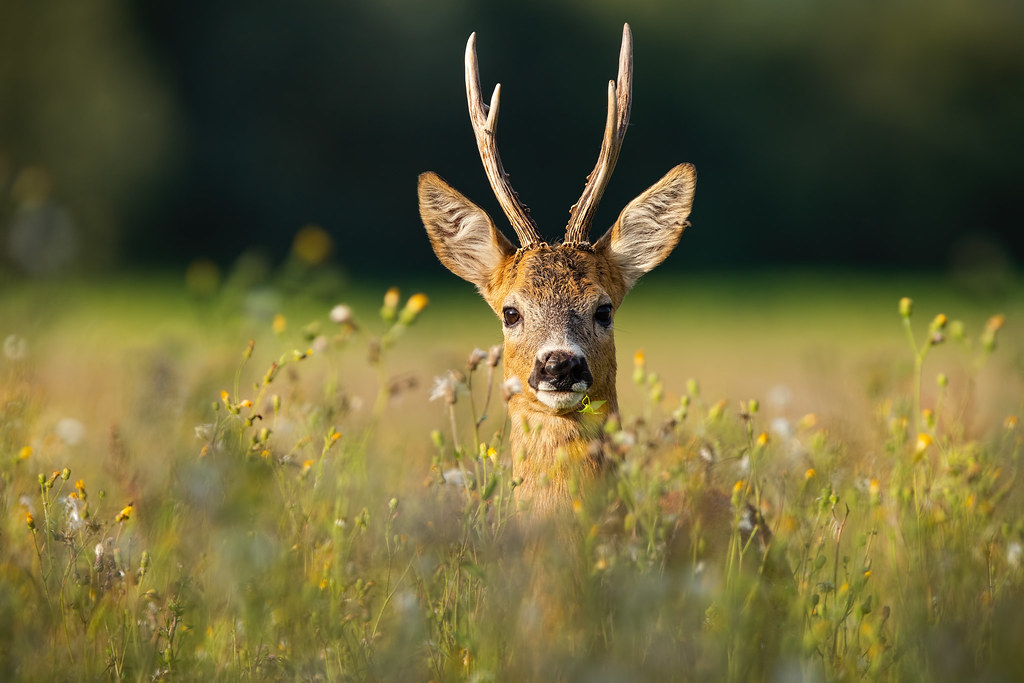
- Diel activity level: measuring the number of independent detections for a period of 24 hours (i.e., diel) in each day at every location
- Nocturnal activity level: assessing the presence or absence of independent detection occurred at night
Independent detections
I considered independent detections as those of the same species recorded within a time lag of 30 minutes, meaning that when more than one videos of the same species were recorded within 30 minutes only the first detection was considered for the analyses.
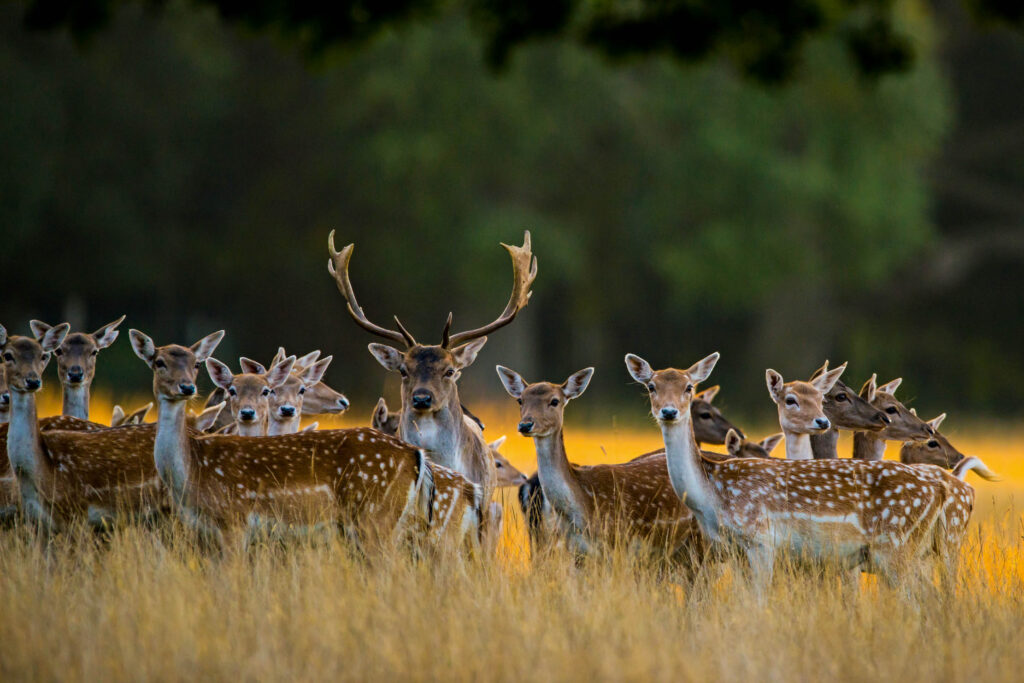
For both responses variables I also included the following variables as predictors:
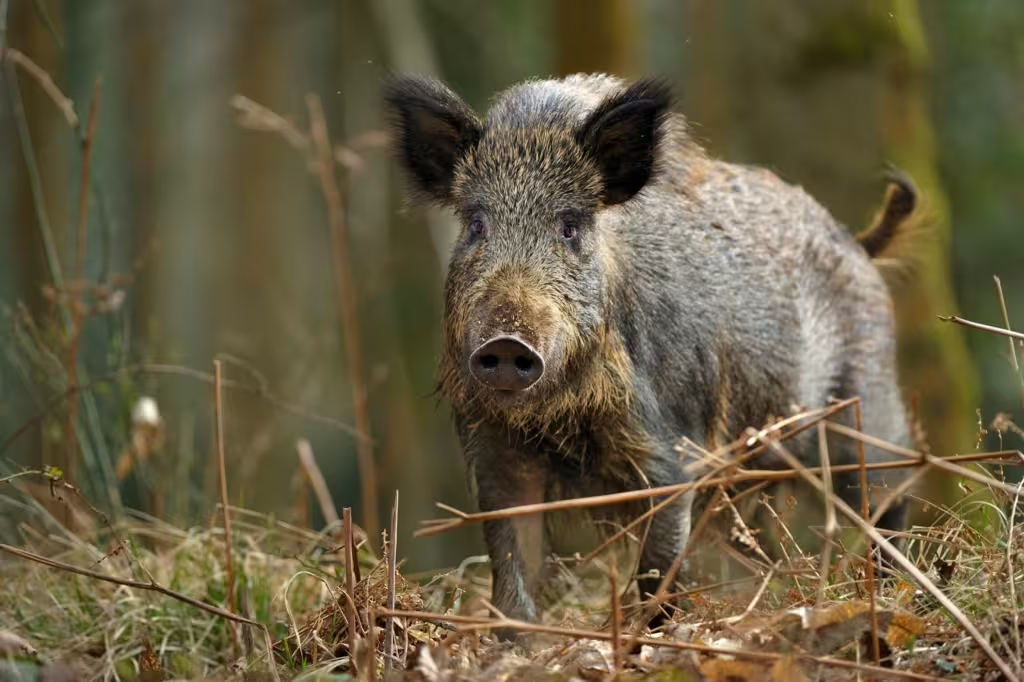
- Wolf detection rate: ‘RAI Wolf’, defined as the number of individuals detected over the total number of sampling days
- Human detection rate: ‘RAI People’, defined as the number of detections over the total number of sampling days
- Fallow deer detection rate: ‘RAI Fallow deer’, defined as the number of individuals detected over the total number of sampling days. This variable was only inserted in the analysis of the roe deer to investigate the possible competitive effects that the fallow deer can display to the roe deer
- Elevation
- Habitat type: closed or open habitat
- Control variables: height of the camera from the ground, shrub cover around the camera, and night duration, which was only inserted in the nocturnal activity analysis
- Random effects: camera trap model and camera trap location